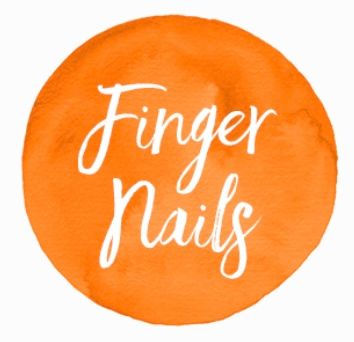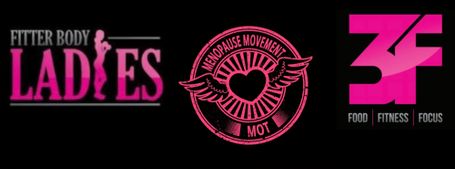
Finger Nails
But for those of us going through menopause, a nail-biting transition, it’s not just skin, hair, weight and temperature that change. Nails can have a torturous time, too, splitting, breaking and changing shape and texture, with vertical ridges becoming more noticeable. “Third Finger, Left Hand” Martha Reeves & The Vandellas were probably imagining perfect, wedding-band ready hands, we're not!
WHY NOW?
Hormonal imbalances and dehydration are the likely causes of brittle nail syndrome, and although it might not be the most serious (or well-known) menopause symptom, it can be upsetting and painful. Nails are made of a hardened protein called keratin, but depleting oestrogen levels affect its production. Oestrogen also helps the body to regulate water retention and as levels dip, nails dry out and may crack, flake and break, exposing the nail bed and allowing bacteria to get in, causing infection and swelling. And the good news is…. Once you realise these signs of nail wear and tear are hormone-related, a few simple self-help and lifestyle changes may help prevent this symptom from becoming a painful issue.
BE PROACTIVE
The best ways to deal with brittle nails
What to eat to help with brittle nails
Lubricating, nourishing and hydrating your body are the first steps in sorting the problem out.
Fill the deficiency gap Deal with possible deficiencies in key vitamin, mineral and food groups to help improve nail health.
Vitamin B complex (biotin) deficiency causes ridges. Eat more: cauliflower, pulses, legumes, sweet potato, peanuts, bananas, and eggs.
Isoflavines may boost depleting oestrogen levels. Eat more: nuts, milled linseed, seeds, lentils, wholegrains such as oats and barley.
Lack of Calcium causes dry, brittle nails. Eat more: dairy, beans (kidney, cannellini and good old baked beans) and green vegetables.
Magnesium helps the body to absorb and retain calcium. Eat more: spinach, green beans, pumpkin and sunflower seeds, cashews and almonds.
Omega-3 deficiency results in cracking nails. Eat more: avocado, anchovies, tuna, sardines, salmon, pumpkin and sesame seeds, walnuts – well in fact just about all nuts, especially almonds.
Low levels of Folic Acid can mean hang nails. Eat more: broccoli, spinach, peanuts, asparagus, oranges and bananas.
Getting enough Protein in your diet helps keratin production. Eat more: seafood, lean red meat, chicken and eggs.
Iron, when levels are low, you can end up with ridged, flaking, brittle nails. Eat more: seafood, fortified cereals, beans and lentils.
What to avoid to help with brittle nails
It’s a no smoking zone Smoking lowers oestrogen levels further, causing dehydration, which could make nails brittle. It also affects your circulation and turns nails yellow.
Don the Marigolds Hands and water don’t mix. Wear gloves if you’re washing up, or must put your hands in water regularly. Cells absorb water and expand slightly, but then nails dry and contract, making them brittle. After washing, use a hand cream that will moisturise nails, too.
Avoid the Acetone At least while you’re trying to restore nail health. Nail varnish removers can be very astringent, dehydrating already dehydrated nails, causing them to chip and peel. Why not go the whole hog and give nails a break from varnish and gels?
Avoid cold hands Skin and nails become thinner and dehydrated during menopause and cold weather makes things worse. Wear gloves to keep hands and nails warm - and moisture in.
Lifestyle & wellbeing to help with brittle nails
Water and Herbal Tea, please Brittle nails may be a sign that your body needs more water, less coffee, and fewer fizzy drinks. Nail beds and cuticles are more likely to crack if your body is dehydrated.
A nail soak Take time at the end of the day to massage brittle nails and cuticles with soothing oils. Massage improves blood circulation, making nails stronger, healthier and possibly longer. The occasional soak in warmed oils may help: try almond, argon, vitamin E or coconut oil. And give your cuticles some love and attention with products including Burt’s Bees Lemon Cuticle Crème, CND Solaroil or Revitalize Cuticle Oil.
Have nails fit for the job Keeping nails short and filed means they are less likely to snap, snag and crack (often at the most inopportune moment!) as you carry out day-to-day tasks.
Supplements worth trying for brittle nails
It seems that the best option is to take supplements that claim to help support your body’s natural oestrogen production. You could take:
Biotin Supplements- Nature’s Best capsules.
Nettle – contains the mineral silicone, which may strengthen nails.
Evening Primrose Oil – contains essential fatty acids, which may prevent cracking.
Vitamin E – apply oil drops directly to your nails and cuticles or as a capsule (will help with hair, skin and nails).
Be aware that natural supplements may affect any prescription medications that you’re taking. Always buy products with a THR (Traditional Herbal Remedy) mark. If in doubt, check safe levels with your doctor.
When to see your doctor about brittle nails
Changes to nails may, of course, be nothing to do with menopause but caused by an underlying health condition. Talk to your doctor if diet and lifestyle changes don’t result in improved nail health.
And then there’s always HRT….
We think it’s unlikely you’d choose HRT just to improve your nails, but if you take it for other menopause symptoms, enjoy the added bonus that increased levels of collagen bring, improving skin, bone and nails.
The usual caveat here, that HRT is something to be discussed with your doctor. There are pros and cons to taking it.
And we can help
Your Fbl Team x
© Copyright. All rights reserved.
